I recently concluded a tour that included the incomparable Venice. Many other cities in the world try to compare themselves to Venice, but it is all mere marketing. There is only one Venice, unique in the world.
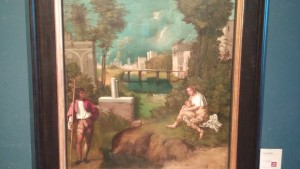
One of the sights one visits in Venice is the Accademia Museum, the great painting gallery of the Venetian Renaissance. Replete with Titians, Bellinis, Tintorett's, Tiepolos, Veroneses, Giorgiones, and Canalettos, it is a world class gallery. 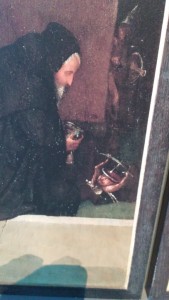 Currently the Accademia has a special exhibit of the Flemish painter Hieronymous Bosch who apparently spent some time in Venice before making dishwashers. Apart from having one of the all time great first names (though he probably was teased as a child) he was a successful late 15th century artist. That success seems to defy all reason for me. Not that his art is not fascinating, arresting, and thought provoking - all good things in art. But rather that his art was sought out 500+ years ago. Bosch's paintings are full of fantastical creatures, phantasmagorias, and nightmarish scenes.
Currently the Accademia has a special exhibit of the Flemish painter Hieronymous Bosch who apparently spent some time in Venice before making dishwashers. Apart from having one of the all time great first names (though he probably was teased as a child) he was a successful late 15th century artist. That success seems to defy all reason for me. Not that his art is not fascinating, arresting, and thought provoking - all good things in art. But rather that his art was sought out 500+ years ago. Bosch's paintings are full of fantastical creatures, phantasmagorias, and nightmarish scenes.  Fraud would have a hay-day with this guy and, in fact, Bosch's art would have resonated with Sigmund's contemporary, Salvador Dali. Dali clearly drew some inspiration from Bosch, and the kindred spirit of subconscious angst is obvious. I bet Timothy Leary was a fan as well.
Fraud would have a hay-day with this guy and, in fact, Bosch's art would have resonated with Sigmund's contemporary, Salvador Dali. Dali clearly drew some inspiration from Bosch, and the kindred spirit of subconscious angst is obvious. I bet Timothy Leary was a fan as well.
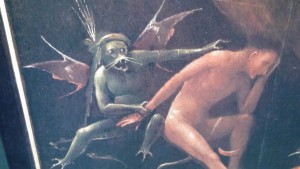 Prior to this Venetian exposure, I had only seen a couple Bosch paintings in Belgium and his magnum opus, The Garden of Earthly Delights, in the Prado in Madrid. I had been fascinated with this artist from the moment I laid eyes on "The Garden" in an art history class decades ago. It is a very modern, even post-modern painting by an artist centuries ahead of his time.
Prior to this Venetian exposure, I had only seen a couple Bosch paintings in Belgium and his magnum opus, The Garden of Earthly Delights, in the Prado in Madrid. I had been fascinated with this artist from the moment I laid eyes on "The Garden" in an art history class decades ago. It is a very modern, even post-modern painting by an artist centuries ahead of his time. 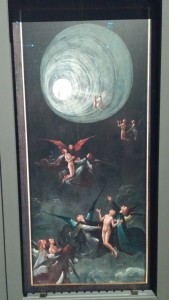 The best I can do to understand his late Medieval appeal is to remember how superstitious Europeans were five+ centuries ago and remind myself that the Renaissance had not yet evolved into the Age of Reason where science would begin to unlock the mysteries of the universe. I guess our subconscious fears of hell, eternal damnation, and purgatorial punishment are hardly new ideas. Dante did I nice job launching that ship with his circles of hell and mental images of fire and brimstone. And Bosch's depiction of a naked soul in a tunnel of light fits the prevailing interpretation among modern psychologists - a near death experience. Perhaps Bosch had such an experience. Maybe he experimented with psychotropic drugs.
The best I can do to understand his late Medieval appeal is to remember how superstitious Europeans were five+ centuries ago and remind myself that the Renaissance had not yet evolved into the Age of Reason where science would begin to unlock the mysteries of the universe. I guess our subconscious fears of hell, eternal damnation, and purgatorial punishment are hardly new ideas. Dante did I nice job launching that ship with his circles of hell and mental images of fire and brimstone. And Bosch's depiction of a naked soul in a tunnel of light fits the prevailing interpretation among modern psychologists - a near death experience. Perhaps Bosch had such an experience. Maybe he experimented with psychotropic drugs.
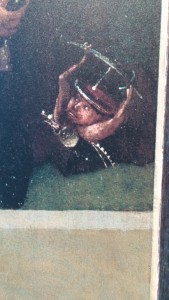 Despite my lack of understanding, I'm a little closer to clarity after this visit. I read the captions beneath the Bosch installments and learned that the various Stregozzo (his mythical creatures) were seen as representations of the temptations and/or weakness of the flesh. That would fit into what I understand of the general Medieval mindset. Even so, I marvel at how paintings such as those on display in the Accademia ever made it into churches.
Despite my lack of understanding, I'm a little closer to clarity after this visit. I read the captions beneath the Bosch installments and learned that the various Stregozzo (his mythical creatures) were seen as representations of the temptations and/or weakness of the flesh. That would fit into what I understand of the general Medieval mindset. Even so, I marvel at how paintings such as those on display in the Accademia ever made it into churches.
